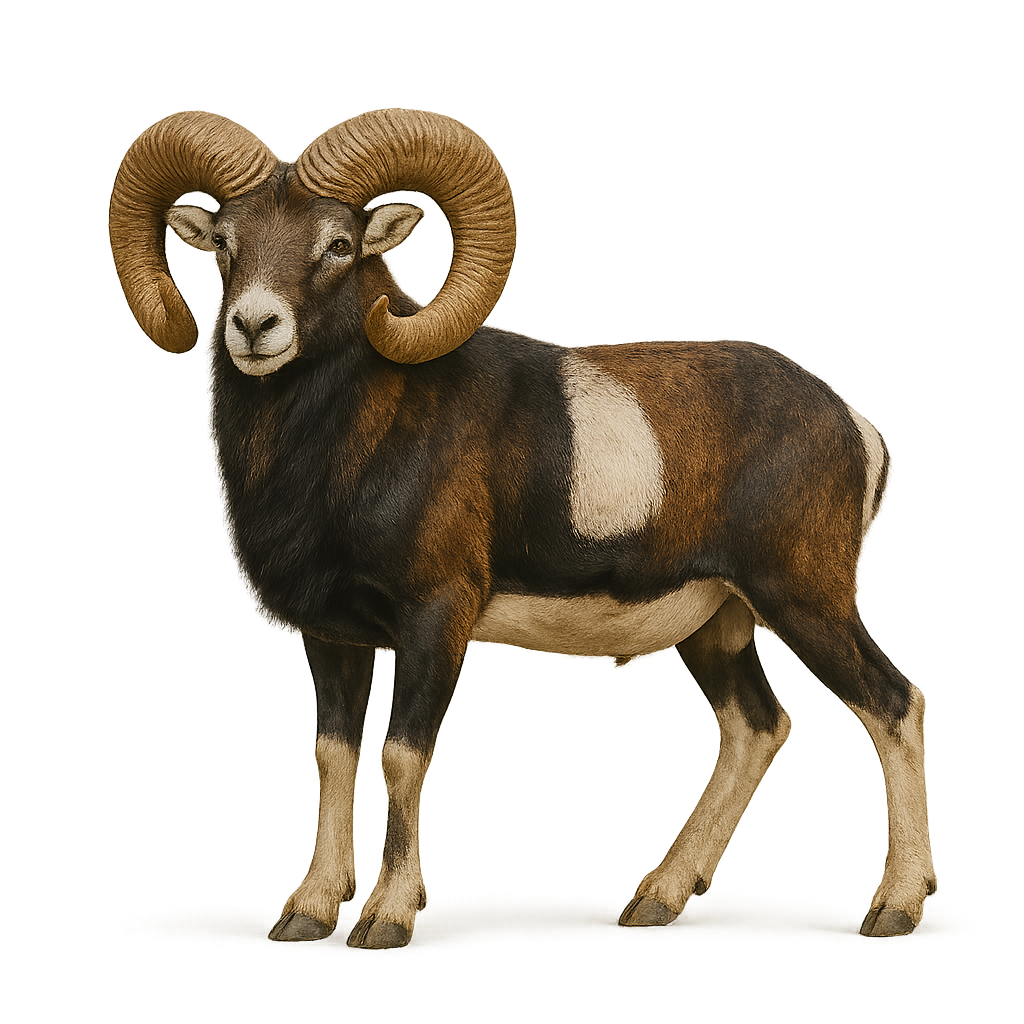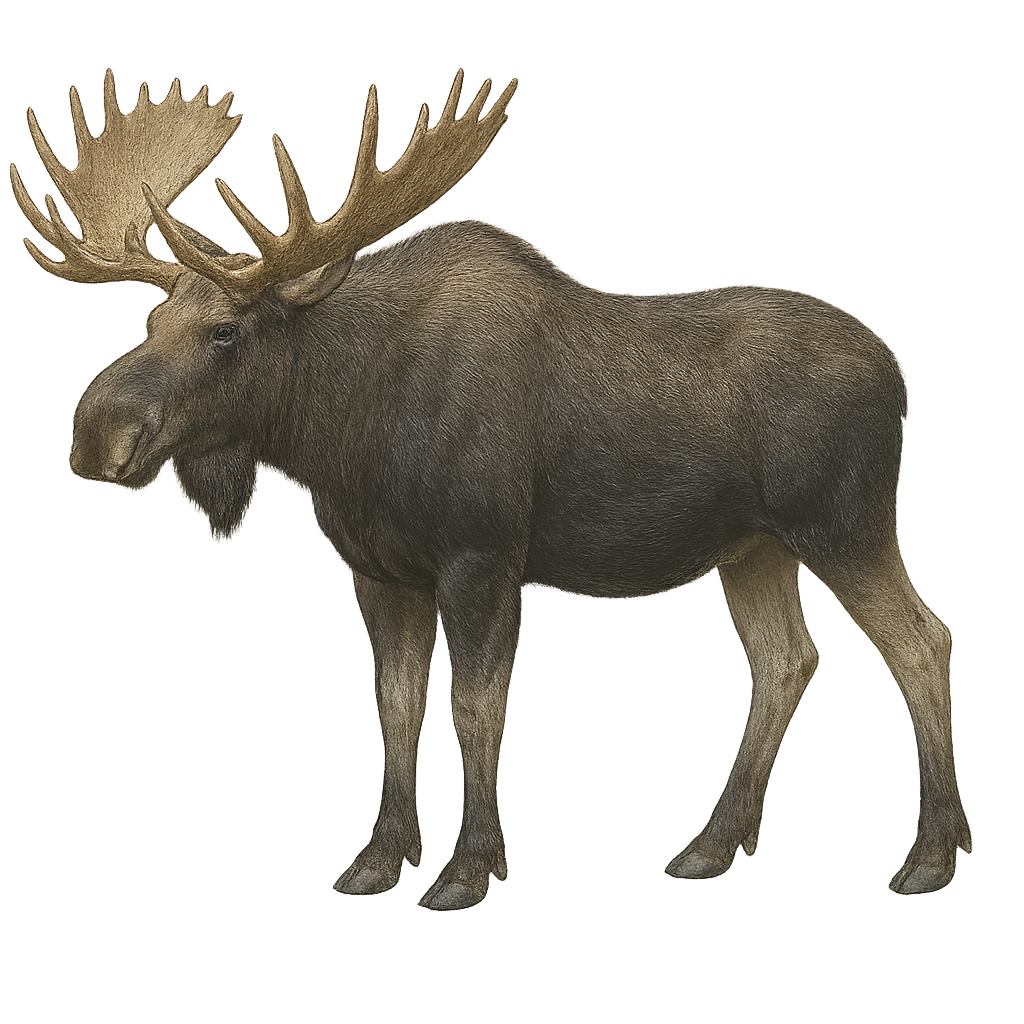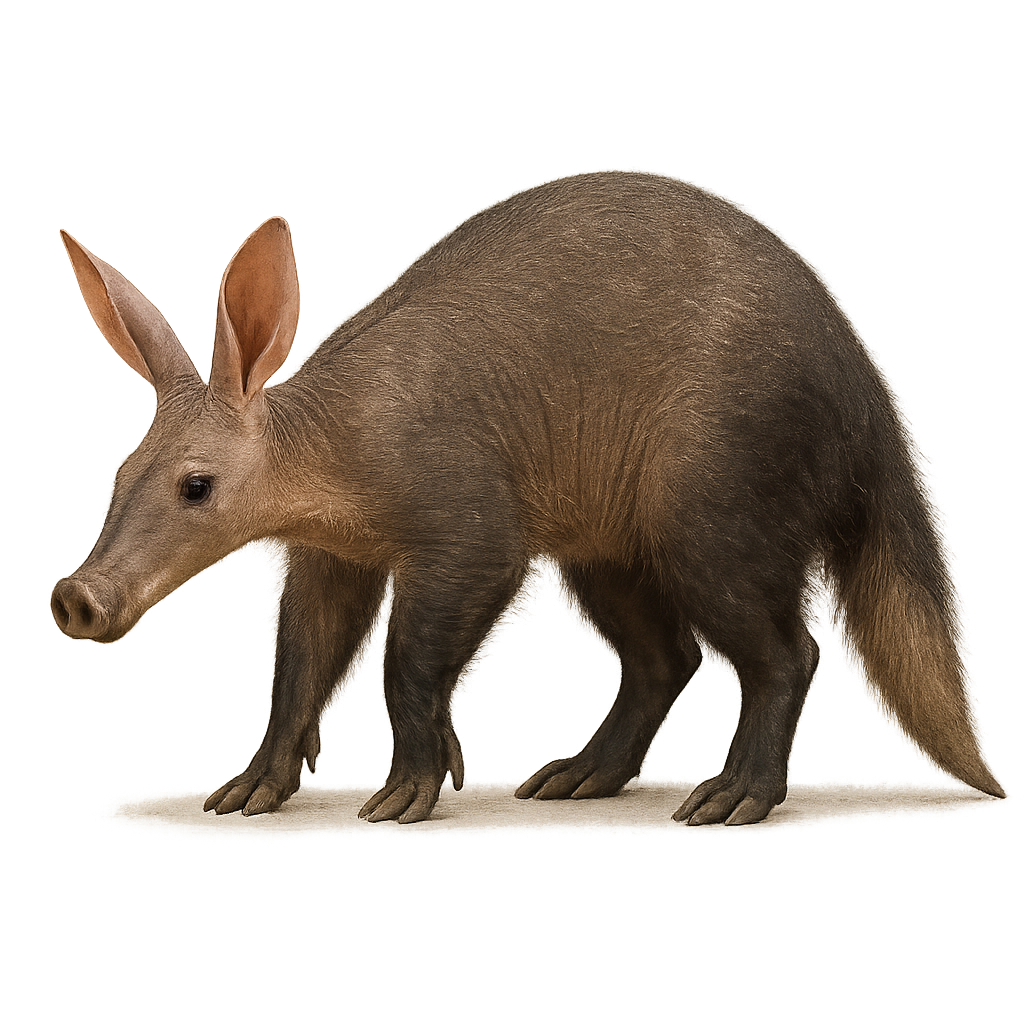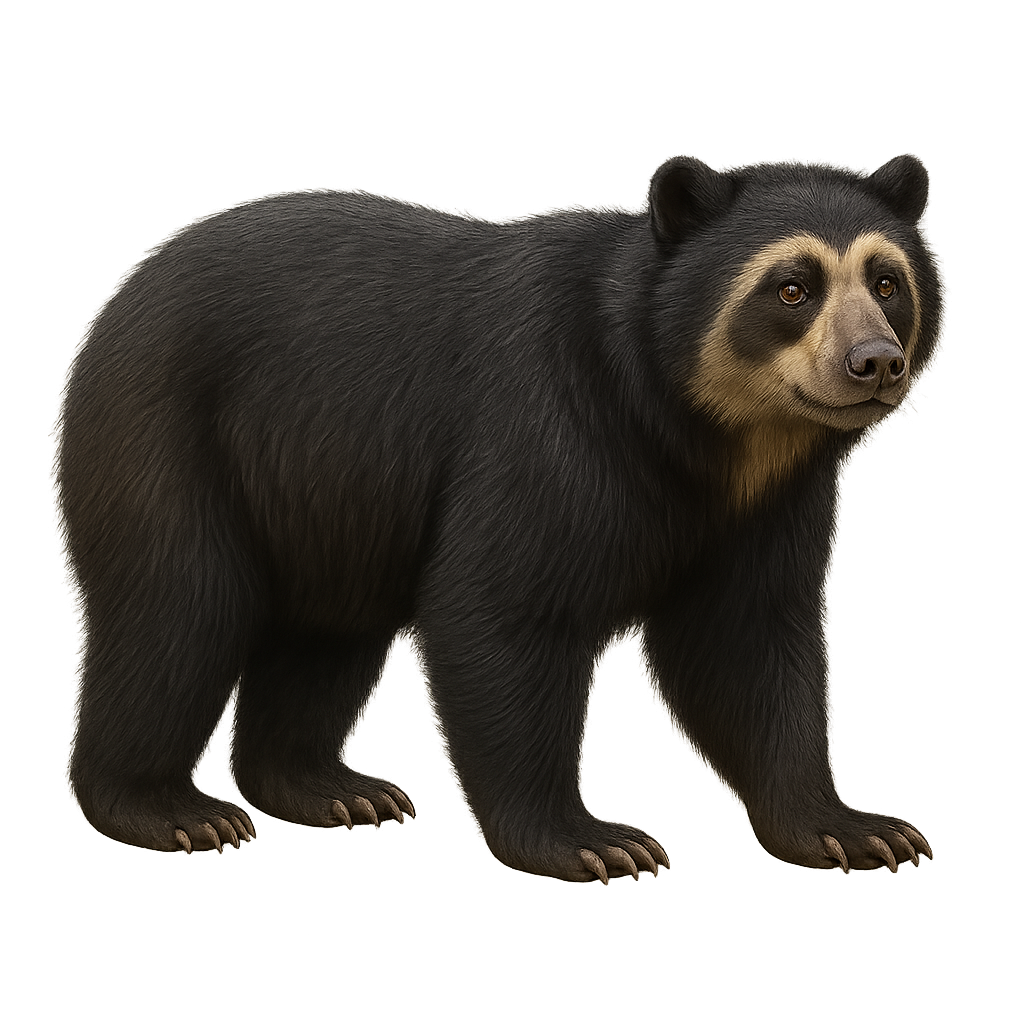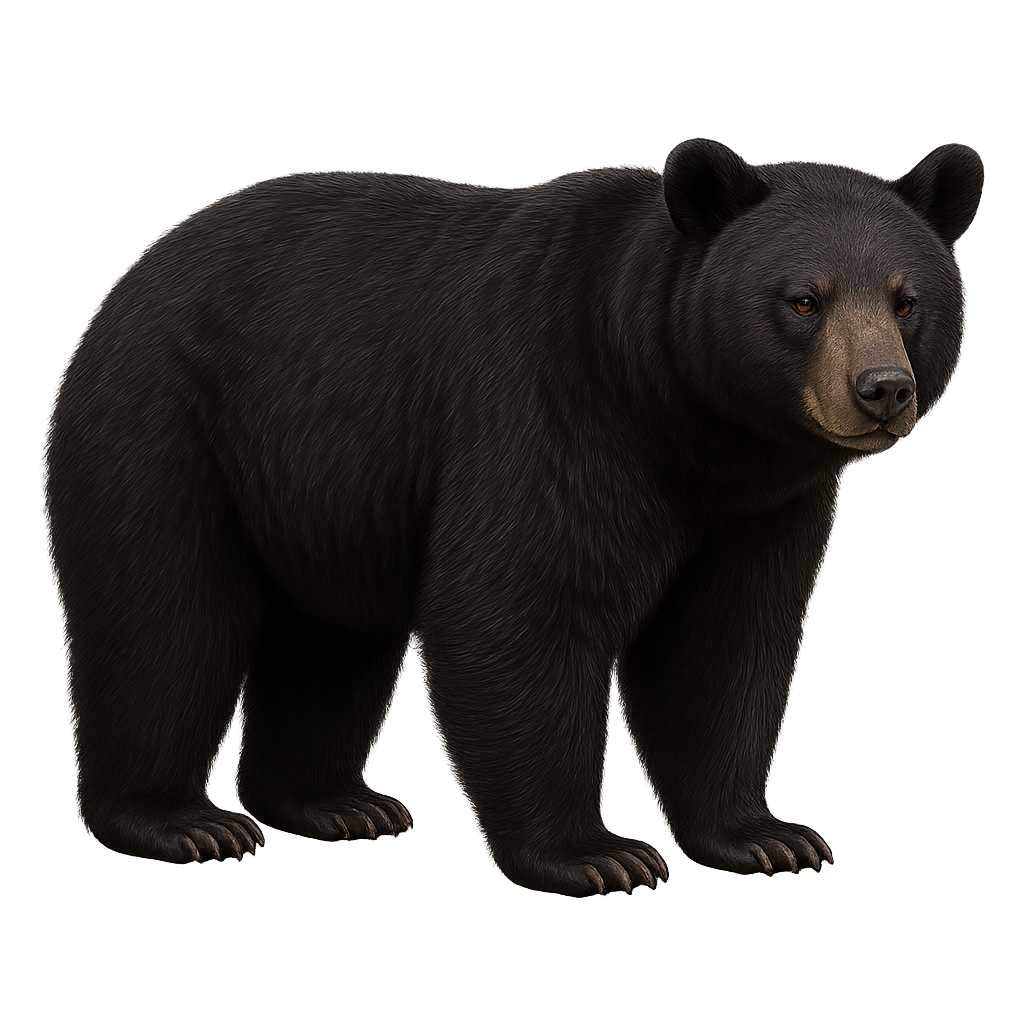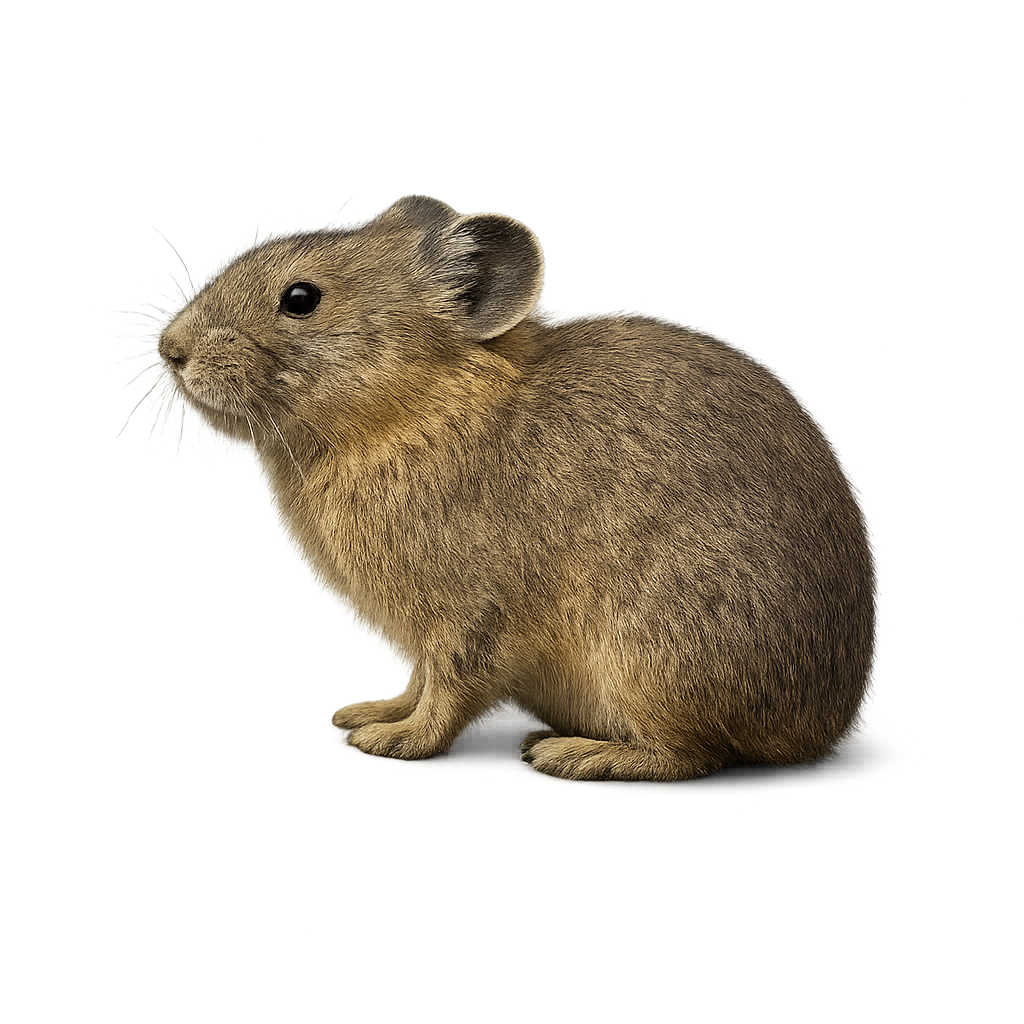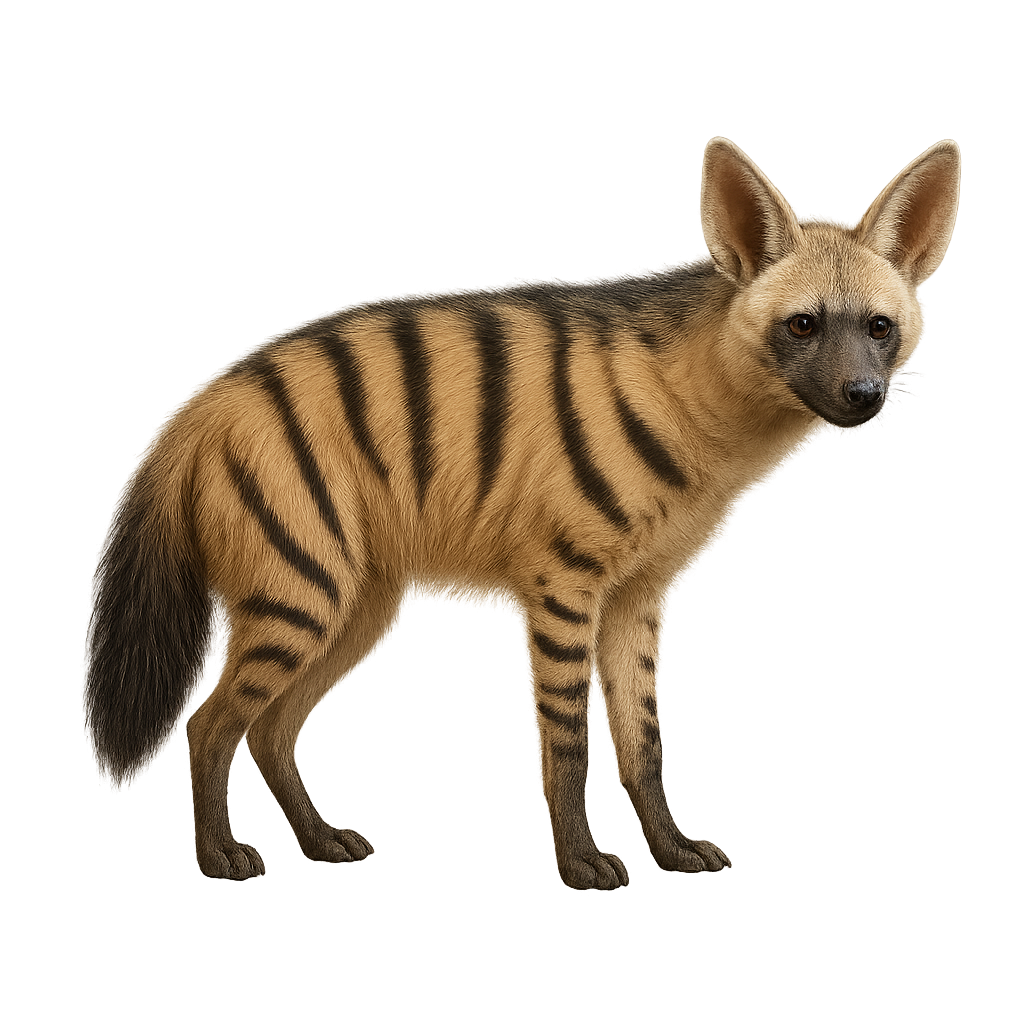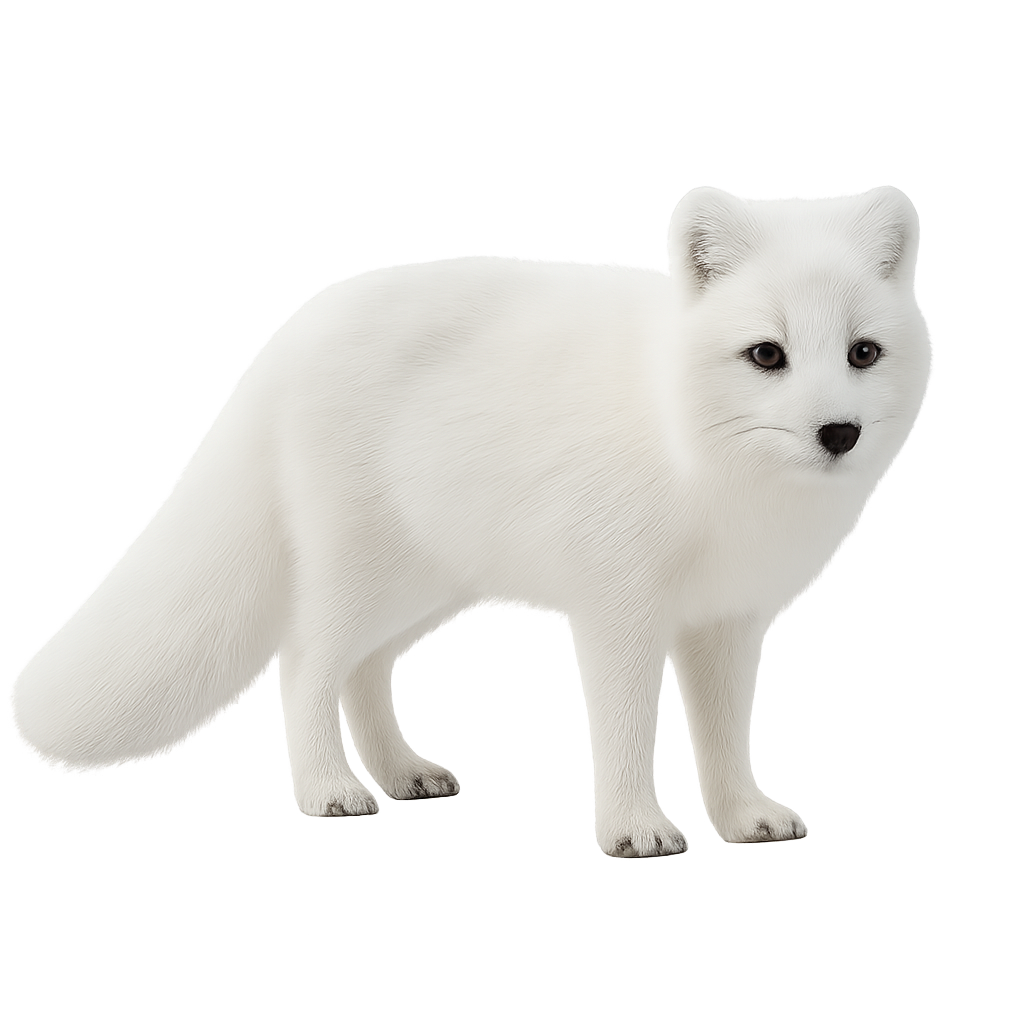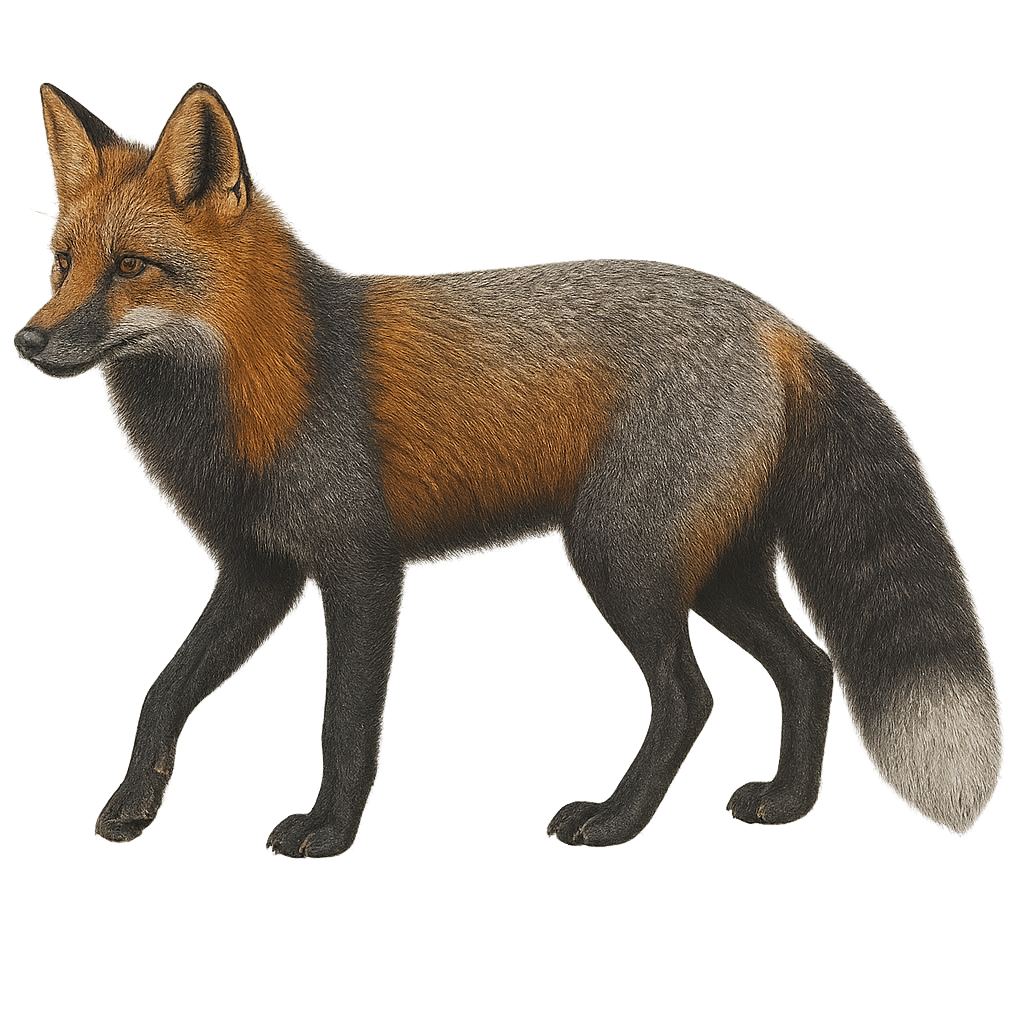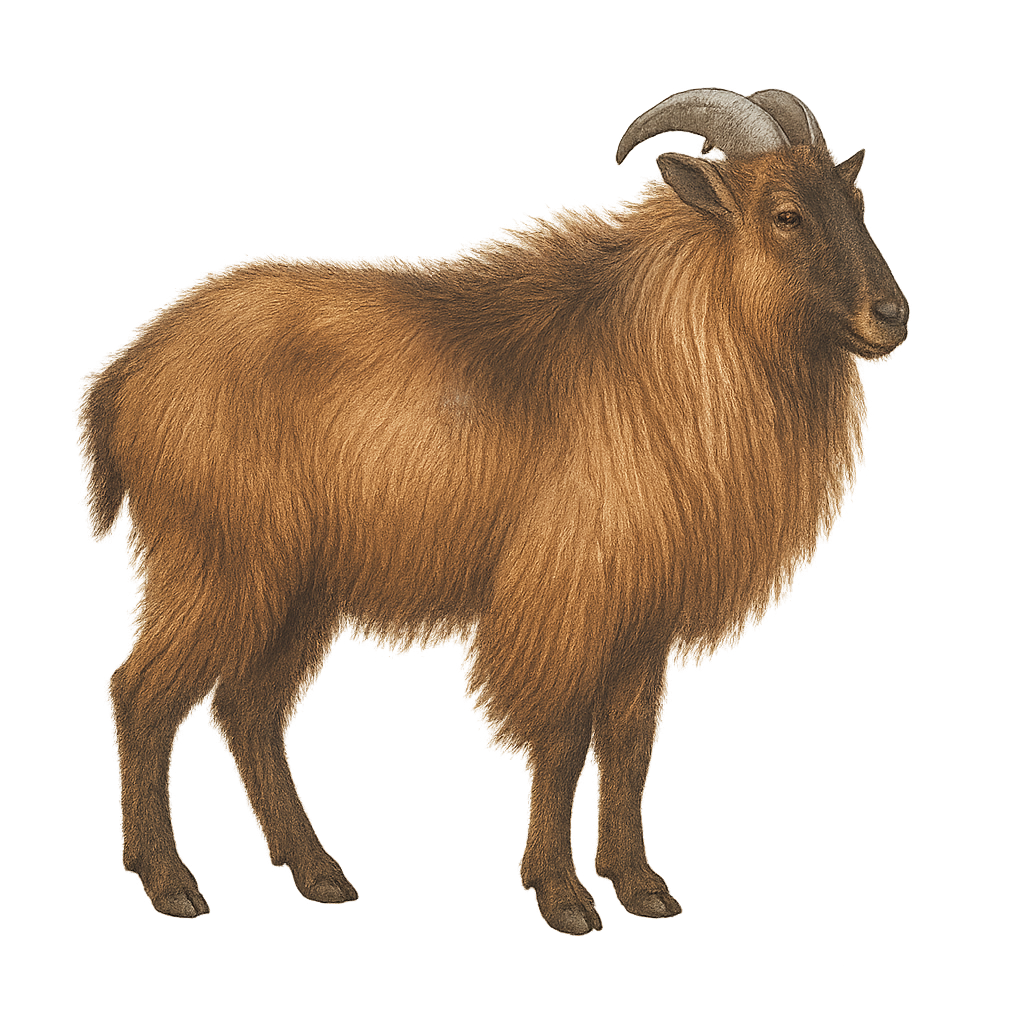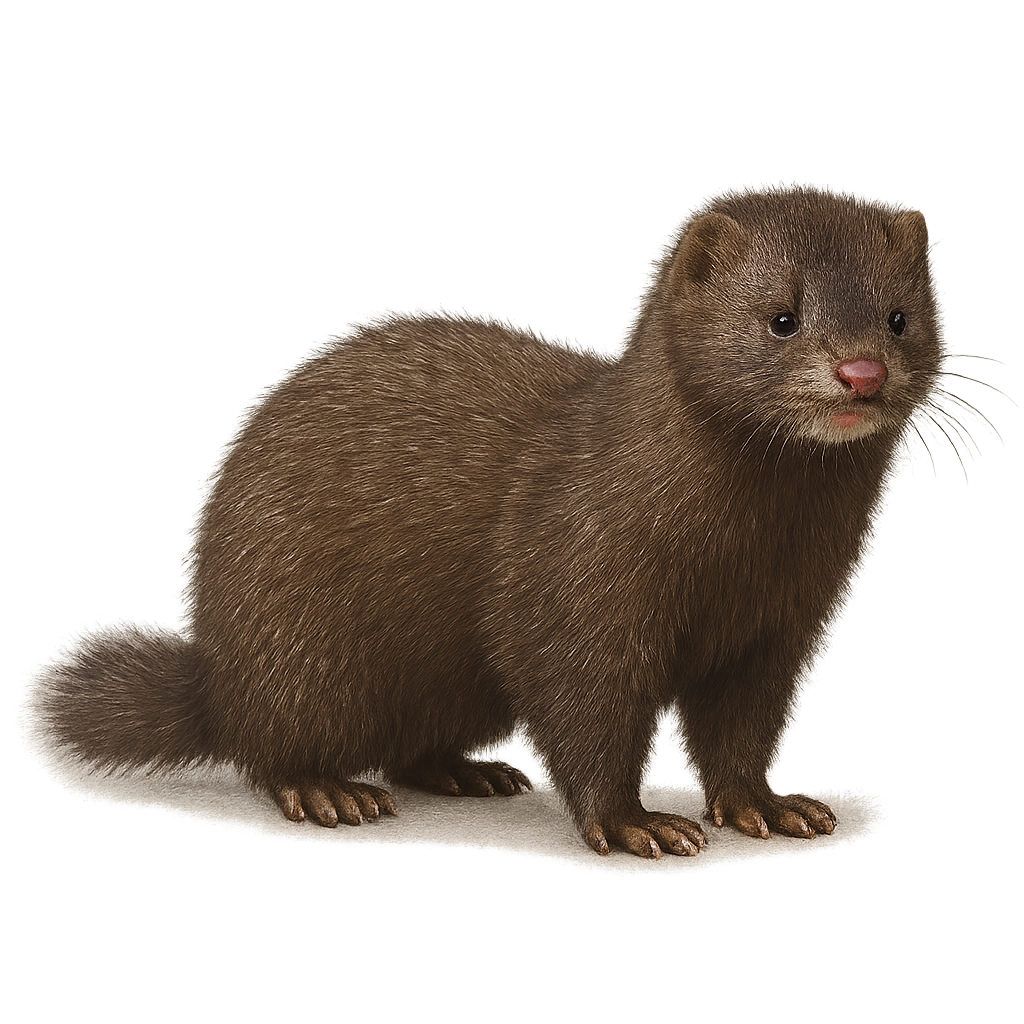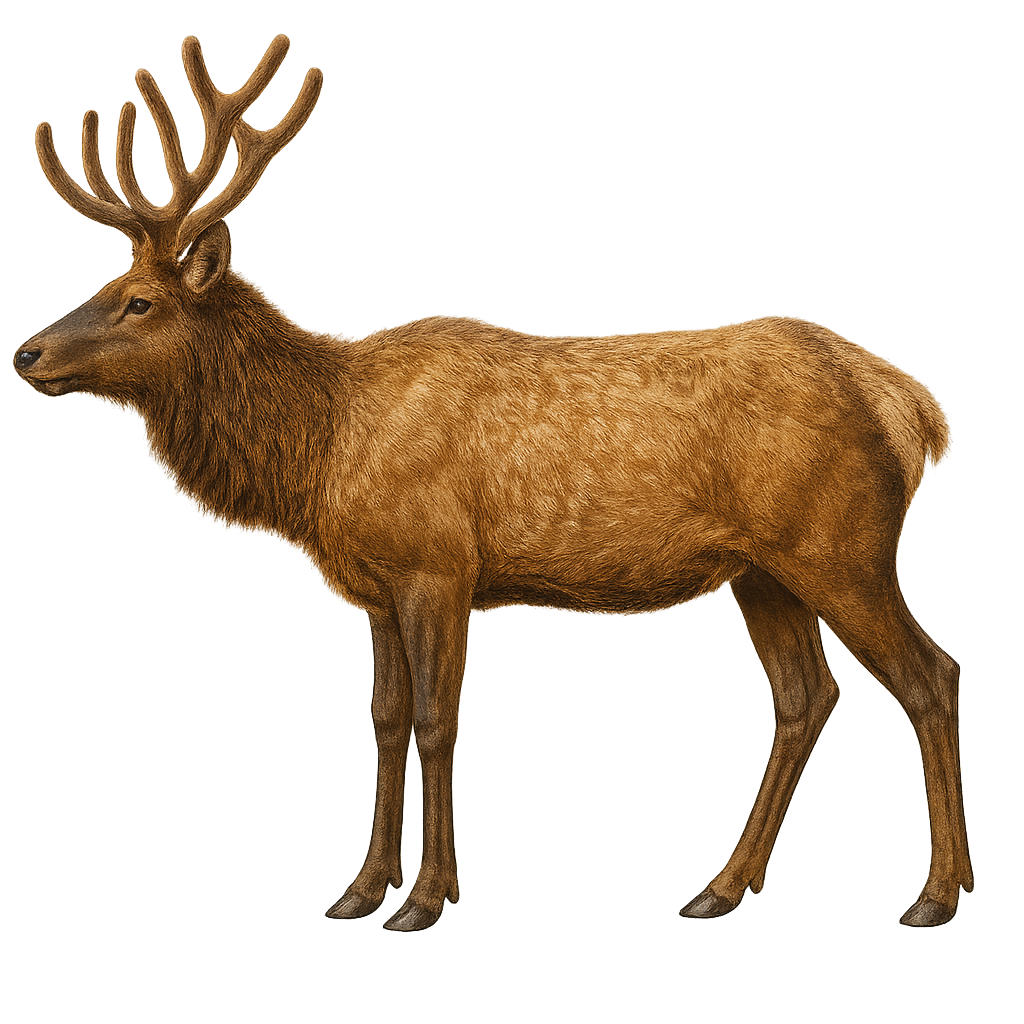The Mouflon oriental is a small wild sheep found primarily in the mountains of Europe, the Middle East, and Central Asia. It measures between 70 and 80 cm in height at the withers and weighs between 40 and 80 kg, with males generally being larger and more imposing than females. What distinguishes the Mouflon oriental is the presence of large, curved horns in males, while females have smaller and less pronounced horns. Their coat is generally reddish-brown in the summer, with a white belly and a darker mane along the back, which becomes thicker and fuller in the winter. The Mouflon oriental primarily inhabits mountainous areas, forests, and meadows, where it feeds on grasses, leaves, shrubs, and roots. It is an excellent climber and moves easily across rocky and steep terrain. While its population remains stable, the Mouflon oriental may be threatened by habitat loss, hunting, and competition with domesticated livestock.
The Alaskan moose, or Alces alces gigas, is the largest member of the deer family. It is distinguished by its impressive size, reaching up to 2.1 meters at the shoulder and weighing over 700 kg. Its wide, flat antlers, which can span up to 2 meters, are characteristic of males. The Alaskan moose primarily inhabits the boreal forests and wetlands of Alaska and Canada. It is well adapted to cold climates thanks to its thick coat. As a herbivore, it feeds on leaves, bark, and aquatic plants. Although generally solitary, it can be seen in small groups during the rutting season.
Native to the savannas and forests of sub-Saharan Africa, the Aardvark is a nocturnal mammal that primarily feeds on termites and ants. It has a long sticky tongue which it uses to extract insects from their burrows. This mammal is easily recognizable by its large ears, elongated snout, and sturdy limbs. Although relatively discreet, the Aardvark is threatened by habitat loss and poaching.
The Asiatic Black Bear, also known as the Tibetan Bear, is a medium-sized mammal found primarily in the mountains of Central Asia, the Indian subcontinent, China, and Russia. It measures between 1.2 and 1.8 meters in length and weighs between 60 and 200 kg. Its coat is typically black, with a distinctive white "V"-shaped mark on its chest. The Asiatic Black Bear is an omnivore, feeding on fruits, berries, roots, small animals, insects, and occasionally carrion. It is an excellent climber and spends much of its time in trees, where it feeds and rests. While the Asiatic Black Bear remains relatively common in some regions, it faces numerous threats such as habitat loss, illegal hunting, and poaching for its body parts.
The Andean Bear, also known as the spectacled bear, is a large mammal found primarily in the tropical forests and mountains of South America, particularly in Colombia, Venezuela, Ecuador, and Peru. It measures about 1.5 to 2 meters in length and weighs between 100 and 200 kg. Its coat is generally black, with white or cream markings around its eyes in the shape of spectacles, hence its name. The Andean Bear is an omnivore, primarily feeding on fruits, plants, honey, and insects, but it may also eat small mammals or birds. It is an excellent climber, using its powerful claws to move through trees in search of food. Although its population remains stable in some areas, the Andean Bear is threatened by habitat loss, deforestation, and poaching.
The American Black Bear is a large carnivore primarily found in North America, in forests, mountains, and wooded areas. It measures between 1.5 and 2.5 meters in length and weighs between 45 and 250 kg, depending on the subspecies and habitat conditions. Its coat ranges from black to light brown, and it has a short muzzle and a large head. The Black Bear is an omnivore, primarily feeding on fruits, berries, nuts, roots, fish, small mammals, and sometimes carrion. It is also an excellent climber and a skilled swimmer, capable of moving through trees and crossing rivers in search of food. While its population remains relatively stable, the Black Bear is threatened by habitat loss, vehicle collisions, and hunting.
The American pika is a small lagomorph mammal, 15–23 cm in length, with a stocky body, short limbs, and small rounded ears, covered in brownish-gray fur. It inhabits alpine rocky slopes and talus fields of North America, from British Columbia to New Mexico, at elevations of 1400–3800 m, feeding on mosses, grasses, and leaves.
The aardwolf, or Proteles cristata, is an insectivorous mammal belonging to the Hyaenidae family, although it differs from hyenas by its diet, which mainly consists of termites. It is recognizable by its striped coat, erect mane, and slender build. Aardwolves are primarily nocturnal, allowing them to avoid the daytime heat in the arid and semi-arid regions of East and Southern Africa where they reside. They dig burrows to rest and protect themselves from predators. Although solitary, they can be observed in small family groups. Their ability to digest termites is aided by a long, sticky tongue.
The Arctic Fox is a small carnivore found in the Arctic regions, primarily in Alaska, Canada, Scandinavia, and Russia. It measures about 45 to 50 cm in length, with a tail of 30 to 35 cm, and weighs between 3 and 9 kg, depending on the seasons. Its fur is typically white in winter, allowing it to camouflage in the snow, while it takes on a more brown or grayish hue in summer to blend in with the rocky and grassy landscapes. The Arctic Fox is an opportunistic omnivore, feeding on small mammals, birds, eggs, fruits, and berries. Although well adapted to the extreme living conditions of the Arctic, it is threatened by climate change, which is altering its natural habitat and the availability of its prey.
The Vulpes vulpes alascensis, or Alaskan Red Fox, is a subspecies of the red fox found primarily in coastal and interior regions of Alaska. This fox is well adapted to cold climates, with a dense and thick coat that protects it from extreme temperatures. Its fur ranges from bright red to dark brown, with a characteristic bushy tail. An opportunistic feeder, it preys on small mammals, birds, insects, and occasionally fruits. Although primarily nocturnal, it can be seen at dawn and dusk. The Alaskan Red Fox is a solitary animal, except during the breeding season. It is known for its intelligence and ability to adapt to various environments, allowing it to survive in harsh conditions.
The African straw-coloured fruit bat is a fruit-eating bat species native to sub-Saharan Africa. This bat is easily recognizable by its golden or straw-colored fur, which helps it blend into the foliage during the day. The African straw-coloured fruit bats primarily feed on fruits, nectar, and pollen, playing a crucial role in pollinating plants. They form large colonies and are often seen in flight at dusk as they head out to search for food. These bats can also travel long distances, making them adaptable to a wide range of habitats.
The Arabian tahr, Hemitragus jayakari, is a species of wild goat native to the arid mountains of Oman and the United Arab Emirates. This robust mammal is well adapted to rugged, rocky terrains, where it primarily feeds on grasses, leaves, and fruits. Males are distinguished by their thick, curved horns, while females have smaller horns. Its dense, brownish coat allows it to blend into its rocky environment. The Arabian tahr is a gregarious animal, living in small groups, although adult males are often solitary. This species is threatened by habitat loss and hunting, leading to its classification as vulnerable by the IUCN.
The American mink, Neovison vison, is a small carnivorous mammal belonging to the Mustelidae family. Native to North America, it has been introduced to various parts of the world for the fur industry. This mustelid is recognizable by its dense, glossy fur, typically dark brown, and its slender silhouette. It measures between 30 and 45 cm, excluding its tail, which can reach 25 cm. The mink is an excellent swimmer and is often found near water bodies like rivers, lakes, and marshes. It primarily feeds on fish, small mammals, birds, and amphibians. Although solitary and territorial, it may occasionally share its territory with other minks.
The Altai wapiti, or Cervus canadensis xanthopygus, is a subspecies of elk found primarily in the mountainous regions of the Altai in Central Asia. This majestic deer is recognizable by its light brown coat with darker shades on the back and legs. Males sport large branched antlers that they shed annually. They live in herds, often separated by gender, except during the rutting season when males join females. Their diet mainly consists of grasses, leaves, and young shoots. Adapted to harsh climates, they migrate seasonally to find food and optimal living conditions.


